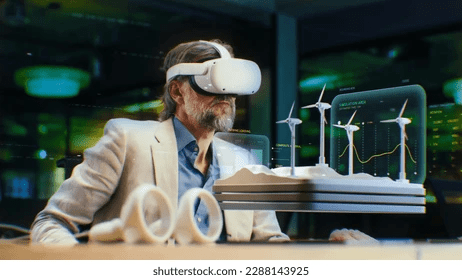What is XR and what can it do?
Extended reality is tearing down the wall between us and our technology

Imagine yourself inside your favorite movie or game and you are fully immersed in a colorful virtual world, right from your living room. Or you are wandering around the neighborhood of your London hotel before you even touch down at Heathrow. Perhaps your child is exploring the Amazon rainforest as they learn about it in science class. These are just a few ways extended reality, or XR – an umbrella term that includes Virtual Reality, Augmented Reality, Mixed Reality, and everything in between – is changing the way we live.
Qualcomm Technologies is at the forefront of this revolution, with a powerful XR ecosystem that its partners can leverage to create XR devices that provide immersive and compelling experiences to both consumers and enterprises. A truly immersive VR experience has extreme computing requirements. With its system approach and custom designed engines, the Qualcomm Snapdragon XR Platform is uniquely equipped to power sleek, lightweight, low-heat, and wireless VR headsets that deliver compelling experiences that will change the way we work and play.
Stroke rehabilitation has been a grueling and particularly long process for patients in recovery. But XR technology is helping to change that. Healthcare company Penumbra has created a portable XR headset called the REAL System, and it is powered by Qualcomm Snapdragon. The REAL System allows patients to go into a dynamic, colorful, and playful XR world, so they can begin to relearn and gain back mobility that they may have lost. Qualcomm-powered XR devices have even helped to alleviate stress and anxiety among frontline workers by offering distractive therapy immersions, like walking through a forest or going for a swim, all from the comfort of their homes.
As developers find more ways to use XR to solve real-world problems, the results could be life-altering. Patients could complete complex checkups from home, while receiving care and supervision from multiple doctors. Medical students may train in fully immersive 3D hospital environments. Visually impaired patients could put on a second set of eyes. When it comes to the future of healthcare, the possibilities for XR-enhanced experiences are remarkable.
“Today we interact with technology from outside. I’m looking at you from the computer. I’m touching the phone until my neck is hurting,” says Said Bakadir, Director, Product Management, Qualcomm Technologies Inc. “This non-intuitive, non-natural interaction with technology is going to fade away as we’re getting inside the technology. We’re going to be part of the technology.”
One thing is clear: XR continues to live up to its name and offers exciting possibilities for the near future, as it extends our physical reality beyond the limits of what’s in front of us.
